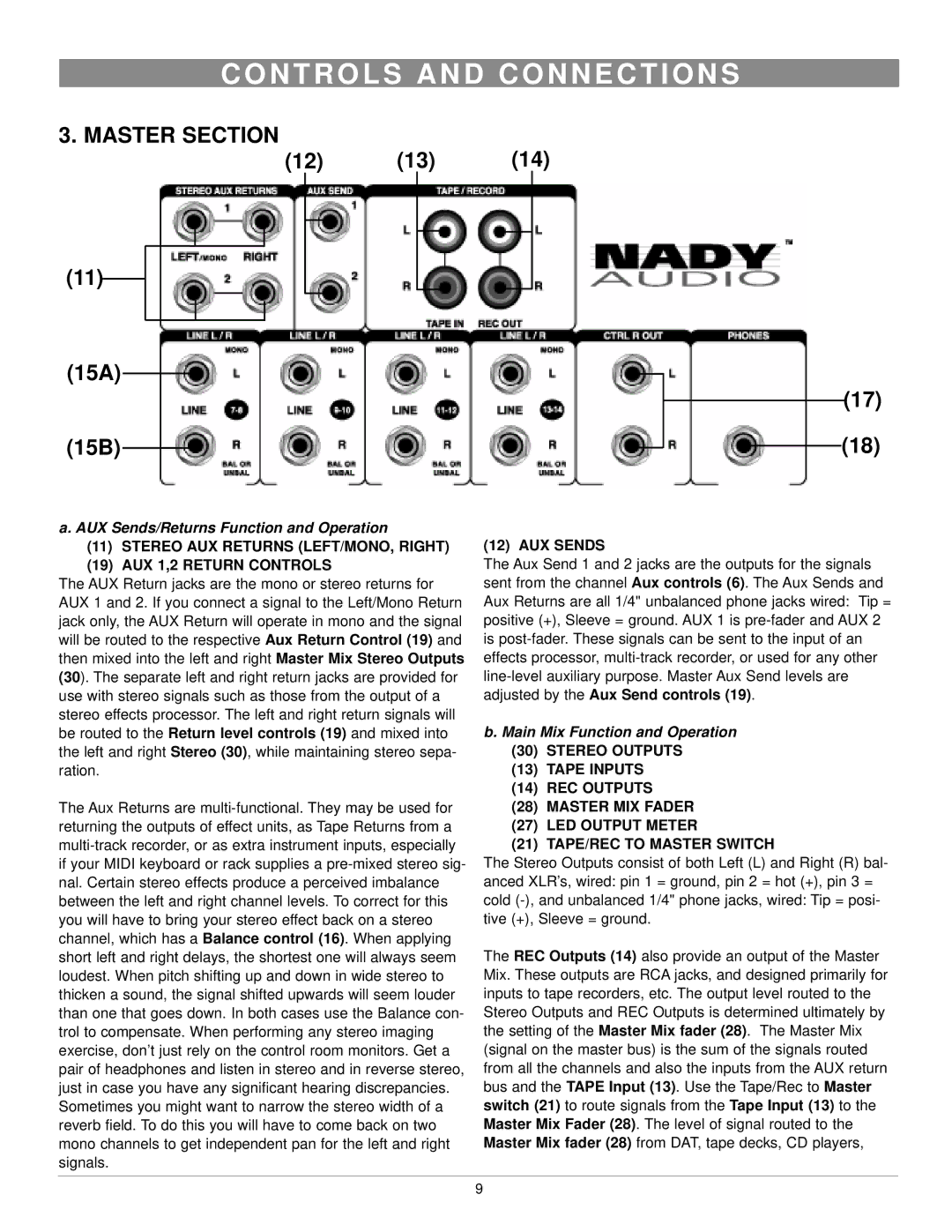SRM-14X, SRM-12X specifications
Nady Systems is a pioneering name in the world of wireless audio technology, and their SRM-12X and SRM-14X models exemplify their commitment to delivering high-quality wireless systems suitable for a wide range of applications. Both units are designed for musicians, performers, and presenters who demand reliability and superior sound quality.The Nady SRM-12X is a versatile, dual-channel wireless receiver. It operates within the UHF frequency range, ensuring minimal interference and enhanced sound clarity. With sixteen selectable frequencies, users can easily switch channels to find the clearest signal available, making it ideal for crowded use situations like concerts or corporate events. The SRM-12X features a unique scanning function that automatically identifies and selects the best operating frequency.
Another significant advantage of the SRM-12X is its compatibility with various Nady transmitters, including lavalier, handheld, and bodypack options. This flexibility allows performers to choose the best type of transmitter for their specific needs, whether they require hands-free capabilities or a traditional handheld microphone.
On the other hand, the Nady SRM-14X takes wireless audio a step further. This model includes all the essential features of the SRM-12X, but it also adds additional advanced technologies for improved performance. One notable characteristic is the enhanced audio processing capabilities, which help to uplift the sound dynamic range, producing richer tones and clearer highs.
Both systems support a wide dynamic range and low total harmonic distortion, confirming that audio fidelity is never compromised. The built-in LED indicators provide real-time monitoring of audio and RF signal strength, ensuring that users can always identify any potential issues before they impact performances.
Moreover, both the SRM-12X and SRM-14X embody Nady's robust construction and reliability. The durable metal chassis stands up to the rigors of touring and extensive use, making these systems dependable for professional applications.
In conclusion, the Nady Systems SRM-12X and SRM-14X offer powerful wireless solutions equipped with sophisticated technologies, versatile compatibility, and excellent audio quality. These systems are well-suited for both novice users and seasoned professionals, reflecting Nady's dedication to innovation in the audio industry. With these models, performers gain confidence in their wireless setup, allowing them to focus on delivering exceptional performances.

